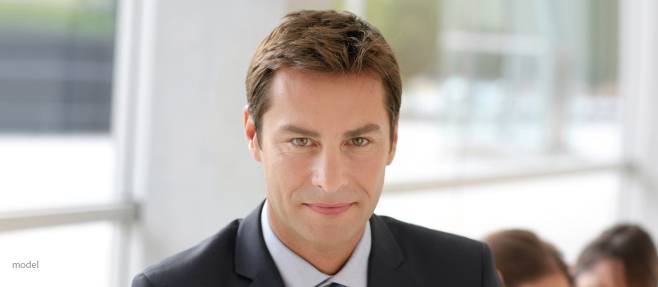Today’s Most Effective Hair Loss Treatment Options

Hair loss, technically referred to as alopecia, can result from a number of causes including genetics (such as in male or female pattern baldness), poor nutrition, stress, pregnancy, drugs, or trauma. There are a number of treatment options available to treat hair thinning and hair loss. Although they may each provide improvement on their own, best results typically occur with the combined use of these products and procedures.
Topical Products:
- DHT Inhibitors – Products like Propecia (finasteride) work to reduce levels of Dihydrotestosterone (commonly known as DHT). DHT is a derivative of testosterone that is now suspected as being the main culprit behind androgenic alopecia (male pattern baldness). On the scalp, DHT shrinks hair follicles to a point where healthy hair cannot survive, resulting in patches of hair loss. DHT inhibitors work to reduce DHT levels in order to stop the cause of hair loss. As such, DHT products are often an essential component of hair restoration treatment plans in men and postmenopausal females.
- Antiandrogens – Whereas DHT inhibitors eliminate DHT, antiandrogens like spironolactone block DHT from reaching the follicle. Antiandrogens enable users to avoid side effects that stem from lowering their DHT levels. Thus it addresses the hormonal contributors to pattern baldness from a different angle, primarily in postmenopausal females.
- Growth Stimulants – This segment of products includes Rogaine (minoxidil) and Latisse (bimatoprost), some of the most popular treatments for hair loss. Growth stimulants do one thing: they work to maintain hair in the growth phase. Because these products do not address the underlying cause of hair loss, they are often combined with DHT inhibitors and or antiandrogens.
Laser Treatment:
Low-level laser therapy is a safe form of light treatment used to treat a variety of types of hair loss and initiate hair regrowth. One option in this category recently cleared by the FDA to safely treat genetic hair loss and hair thinning is the iGrow System. iGrow utilizes low-level light therapy to promote hair growth.
PRP Hair Restoration:
PRP Hair Restoration is a completely non-surgical treatment with the ability to help regrow hair and reverse thinning. Learn more about PRP hair restoration.
Surgical Hair Transplants:
Hair transplantation procedures (such as micro-grafting, slit grafting, punch grafting) involve the removal of hair follicles from the back of the scalp that are then transferred to areas with thin to no hair. While this surgical procedure is effective and essentially curative, this should be weighed against the expense, downtime, and potential need for multiple treatment sessions associated with this procedure. Learn more about hair transplant surgery.
Disclaimer: The contents of the Westlake Dermatology website, including text, graphics, and images, are for informational purposes only and are not intended to substitute for direct medical advice from your physician or other qualified professional.

Hair loss treatment options are plentiful now days, the medications are also different for men and women.
How come the medications are different depending on gender?
Really interested in laser hair removal, i’ve been doing wax and shave and im tired of it!
Great post, I’ll be calling to setup an appointment soon. Looking to be hair free by summer!
Fast hair growth amino scalp therapy shampoos (obviously with no sulfates, no parabens or DEA) can be effective. So check those out too.
Thank you for sharing!
There is also such a procedure as Neocraft. It’s the first minimally invasive procedure of its kind, and it can help restore natural-looking hair with a gentle procedure and minimal downtime—without a large linear scar.
With NeoGraft, each hair follicle is extracted from the scalp, one by one, with NeoGraft’s automated system. This allows follicles to be implanted sooner, which keeps them more robust and increases the rate of success.The use of advanced, automated technology makes NeoGraft the least invasive hair transplantation method available.
NeoGraft is a non-surgical procedure, which means no staples, stitches, scars, or significant discomfort. Rather than spending several weeks for an incision on the scalp to heal, you can get back to work or other activities in just a few days.
It’s good to know that growth stimulants are popular for hair loss. I’m hoping to try out some different hair loss products. I’ve been dealing with that a lot since I turned 40.
There are FUT and FUE treatments also available for hair transplant, but yes laser and pro plasma hair restoration treatments are also very helpful and they are non-surgical.
Thank you for sharing this information with us